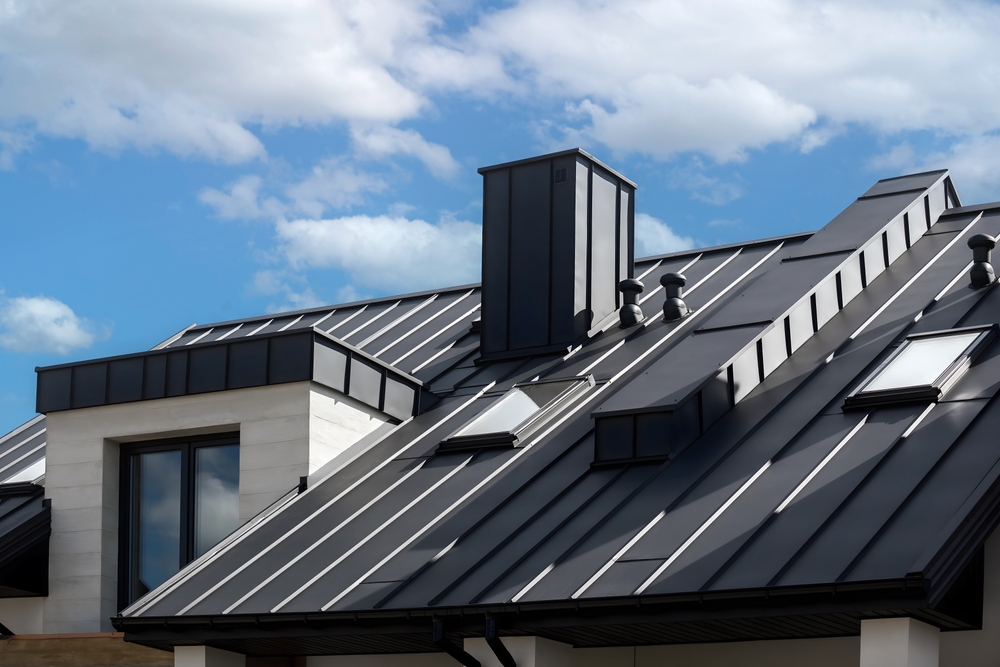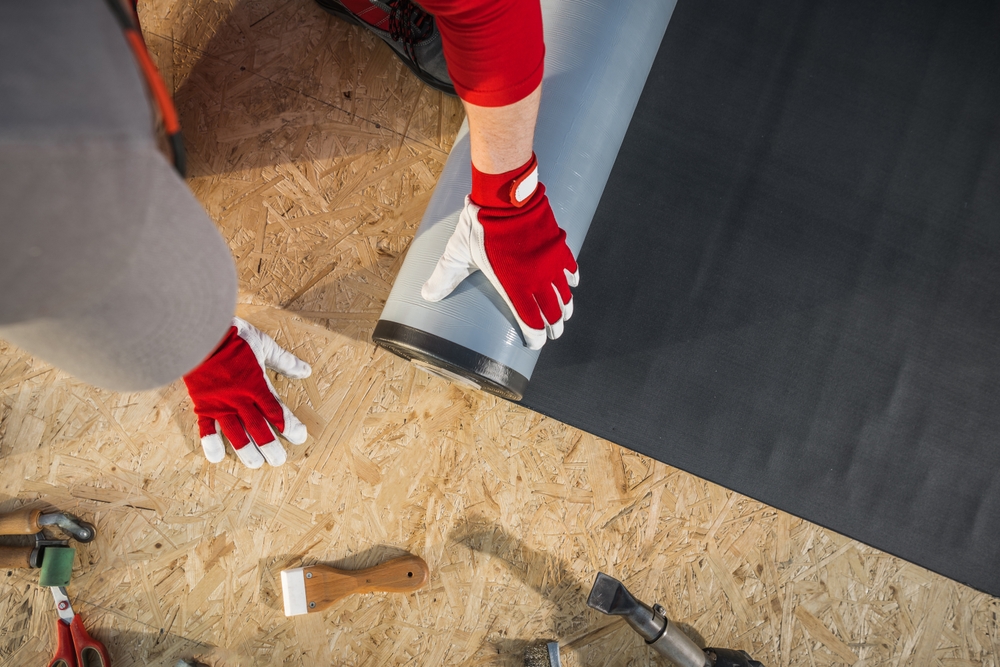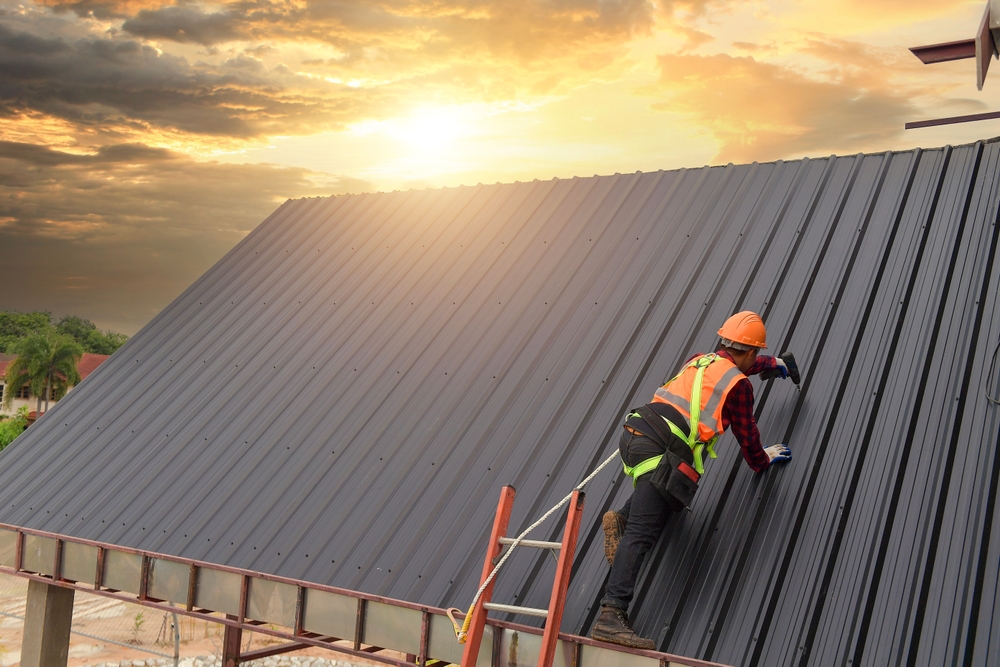Metal Roof Maintenance: What You Should Know
A metal roof is a durable, long-lasting option that provides homeowners with protection, energy efficiency, and peace of mind. However, like all roofing materials, metal roofs require regular maintenance to ensure they stay in excellent condition and continue to offer reliable protection. In this blog, we’ll take you through the crucial steps for maintaining your metal roof and discuss why regular care is vital for its longevity.
Table of Contents
- Why Metal Roofs Need Maintenance
- Inspect for Rust and Corrosion
- Clean Your Roof and Gutters Regularly
- Check for Loose or Damaged Fasteners
- Look for Signs of Leaks
- Trim Overhanging Branches
- Reapply Protective Coatings
- Hire a Professional for Regular Inspections
- Maintaining Your Metal Roof for Long-Term Protection

Why Metal Roofs Need Maintenance
Metal roofs are well-known for their strength, durability, and ability to withstand extreme weather conditions. They can last anywhere from 40 to 70 years, depending on the material used and the quality of installation. However, this does not mean they are entirely maintenance-free. Over time, environmental factors such as weather, debris, and temperature fluctuations can affect the performance of your roof. Without proper care, issues like rust, leaks, and corrosion may arise, leading to costly repairs. Routine maintenance is key to prolonging the life of your roof and ensuring it continues to provide effective protection against the elements.
Inspect for Rust and Corrosion
One of the most significant issues metal roofs face over time is rust and corrosion. Although modern metal roofs are coated with protective layers that prevent rusting, exposure to moisture, salt (if you live in a coastal area), or physical damage can break down these protective coatings. If left untreated, rust can spread and cause severe damage to your roof, leading to leaks and structural problems.
To prevent rust, conduct an inspection of your roof at least twice a year, especially after heavy rain or storms. Look for any small rust spots or areas where the protective coating may have worn away. If you find any rust, remove it by using a wire brush or sandpaper. Be gentle to avoid damaging the metal. Afterward, apply a rust-resistant primer and repaint the area with a high-quality metal roof paint to restore its protective coating. This simple action can save you from costly repairs in the future.
Clean Your Roof and Gutters Regularly
Another essential aspect of metal roof maintenance is keeping the surface clean. Over time, debris such as leaves, branches, dirt, and moss can accumulate on the roof and in the gutters. If debris is not cleared, it can lead to clogged gutters, preventing proper water drainage. This blockage can cause water to pool on your roof, potentially leading to rust, leaks, and even roof damage.
To prevent these issues, it’s important to clean your roof and gutters regularly. Use a broom or a soft-bristle brush to gently sweep debris off the surface of the roof. Avoid using pressure washers as they can damage the protective coating of the metal. Also, make sure to clean out the gutters and downspouts to ensure that rainwater flows freely and doesn’t back up onto the roof.
Check for Loose or Damaged Fasteners
The fasteners (screws, bolts, nails) that secure your metal roof can loosen over time, particularly after strong winds, storms, or extreme temperature changes. Loose fasteners can lead to roof panels shifting, gaps forming, and water entering the roof structure. This can result in leaks and more extensive damage.

Regularly check the fasteners on your metal roof to ensure they are tight and secure. If you notice any loose or missing fasteners, replace them promptly. When replacing fasteners, it’s essential to use the same type and size as the original ones to ensure a proper fit. In some cases, you might need to reseal the areas around the fasteners to prevent leaks.
Look for Signs of Leaks
Although metal roofs are highly resistant to leaks, they can still develop issues over time, particularly at the seams, flashing, or areas where the roof has penetrations such as vents, chimneys, or skylights. Leaks often occur when water infiltrates these areas due to deteriorating seals or damaged flashing.
Look for signs of leaks inside your home, such as water stains on ceilings or walls, damp spots in the attic, or a musty odor. If you notice any of these signs, investigate the roof for possible points of entry. It’s essential to address leaks as soon as possible to prevent water damage to the roof structure, insulation, and interior of your home. Call a professional roofer if you suspect a leak or need assistance with locating and repairing it.
Trim Overhanging Branches
Overhanging tree branches can cause damage to your metal roof in a few ways. First, branches that come into contact with the roof can scratch or dent the surface, compromising the integrity of the metal. Second, branches that drop leaves, twigs, or other debris can clog gutters or create moisture traps on the roof, which can lead to rust and other issues.
To avoid these problems, keep any trees or large branches near your roof trimmed back. Ensure that branches are at least 10-15 feet away from the roof surface. This will prevent physical damage to your roof and make it easier to maintain.
Reapply Protective Coatings
Metal roofs often come with a protective coating to shield them from UV rays, moisture, and general wear and tear. Over time, this protective layer can degrade, especially in areas with harsh climates. Reapplying a protective coating can help restore your roof’s resistance to rust, corrosion, and weather damage.
Depending on the manufacturer’s recommendations and the condition of your roof, you should plan to reapply a protective coating every 5 to 10 years. This is typically done by professionals, who can assess the roof’s condition and apply the appropriate coatings to ensure the best protection.
Hire a Professional for Regular Inspections
While many maintenance tasks can be handled by homeowners, it’s always a good idea to hire a professional roofer for an annual inspection. Roofing professionals have the experience and tools needed to identify potential issues that may not be obvious to an untrained eye. They can assess the roof’s condition, check for damage, and recommend any necessary repairs or preventative measures.

A professional roofer can also help with more complex issues, such as flashing repairs, sealant applications, and addressing areas that require special attention. By scheduling regular professional inspections, you can catch problems early and avoid expensive repairs in the future.
Maintaining Your Metal Roof for Long-Term Protection
Metal roofs are an excellent choice for homeowners looking for durability, energy efficiency, and long-term protection. However, even the best metal roof requires regular maintenance to ensure it remains in good condition. By inspecting for rust, cleaning gutters, checking fasteners, and addressing leaks, you can extend the lifespan of your roof and prevent costly repairs. If you’re unsure where to start with your metal roof maintenance or need a professional inspection, Roofers Repair Near Me is here to help. Our experienced team of roofers is dedicated to providing top-notch roof maintenance services to keep your home protected.